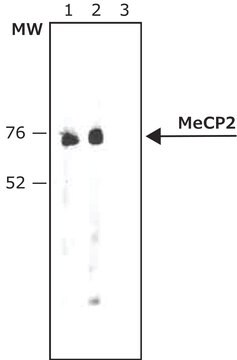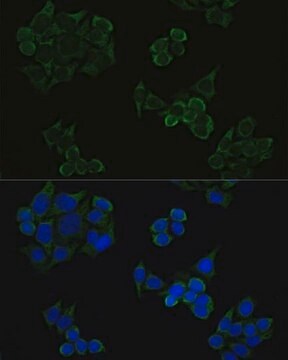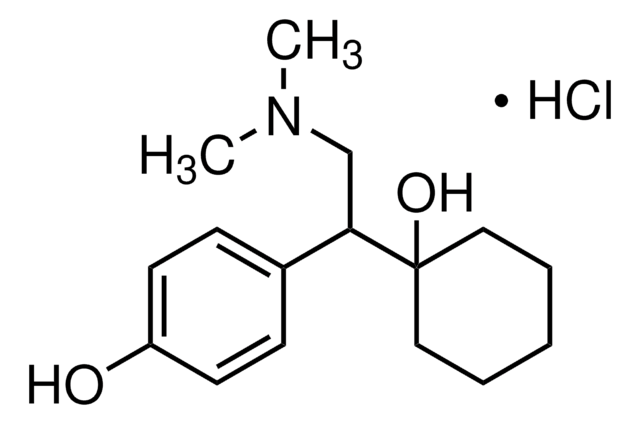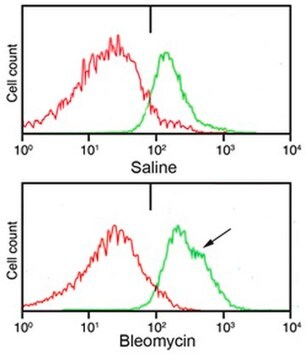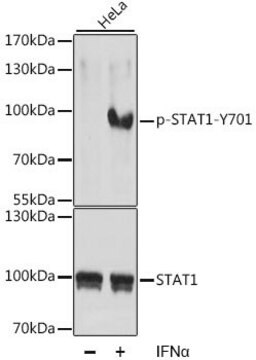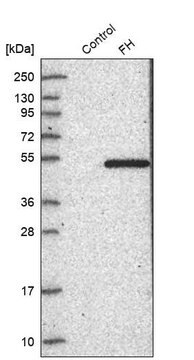MABF935
Anti-MPR300/IGF-2R/CD222 Antibody, clone 2C2
clone 2C2, from mouse
別名:
Cation-independent mannose-6-phosphate receptor, 300 kDa mannose 6-phosphate receptor, CD222, CI Man-6-P receptor, CI-MPR, IGF-II receptor, Insulin-like growth factor 2 receptor, Insulin-like growth factor II receptor, M6P/IGF2 receptor, M6P/IGF2R, M6P-R
About This Item
おすすめの製品
由来生物
mouse
品質水準
抗体製品の状態
purified immunoglobulin
抗体製品タイプ
primary antibodies
クローン
2C2, monoclonal
化学種の反応性
human
テクニック
affinity binding assay: suitable
immunocytochemistry: suitable
immunohistochemistry: suitable
western blot: suitable
アイソタイプ
IgG1κ
NCBIアクセッション番号
UniProtアクセッション番号
輸送温度
dry ice
ターゲットの翻訳後修飾
unmodified
遺伝子情報
human ... IGF2R(3482)
詳細
特異性
免疫原
アプリケーション
炎症及び免疫
小胞輸送
Affinity Binding Assay: A representative lot competed against IGF-II, but not pentamannose 6-phosphate (PMP), for binding immobilized IGF-II receptor (MPR) (Braulke, T., et al. (1988). Biochem. Res. Commun. 150(3):1287-1293).
Western Blotting Analysis: A representative lot was labeled with 125I and detected the ~300 kDa IGF-II receptor (MPR300) in lysates from HeLa cells and primary human macrophages (Pohl, S., et al. (2010). J. Biol. Chem. 285(31):23936-23944).
Immunohistochemistry Analysis: A representative lot detected hepatocyte membrane and cytoplasmic M6P/IGF-2R immunoreactivity in normal human liver frozen sections. A reduced immunostaining of hepatocytes restricted to the sinusoidal part of the cell membrane and an increased signals in perisinusoidal cells was seen in cirrhotic livers (Sedlaczek, N., et al. (2003). Br. J. Cancer. 88(5):733-739).
Immunocytochemistry Analysis: A representative lot immunostained late endosomes in 2% paraformaldehyde-fixed, 0.01% saponin-permeabilized human fibroblasts (Bakker, A.C., et al. (1997). J. Cell Sci. 110 (Pt 18):2227-2238).
品質
Immunocytochemistry Analysis: A 1:250 dilution of this antibody detected MPR300/IGF-2R/CD222 in HeLa cells.
ターゲットの説明
物理的形状
保管および安定性
Handling Recommendations: Upon receipt and prior to removing the cap, centrifuge the vial and gently mix the solution. Aliquot into microcentrifuge tubes and store at -20°C. Avoid repeated freeze/thaw cycles, which may damage IgG and affect product performance.
その他情報
免責事項
適切な製品が見つかりませんか。
製品選択ツール.をお試しください
保管分類コード
12 - Non Combustible Liquids
WGK
WGK 2
引火点(°F)
Not applicable
引火点(℃)
Not applicable
適用法令
試験研究用途を考慮した関連法令を主に挙げております。化学物質以外については、一部の情報のみ提供しています。 製品を安全かつ合法的に使用することは、使用者の義務です。最新情報により修正される場合があります。WEBの反映には時間を要することがあるため、適宜SDSをご参照ください。
Jan Code
MABF935:
試験成績書(COA)
製品のロット番号・バッチ番号を入力して、試験成績書(COA) を検索できます。ロット番号・バッチ番号は、製品ラベルに「Lot」または「Batch」に続いて記載されています。
ライフサイエンス、有機合成、材料科学、クロマトグラフィー、分析など、あらゆる分野の研究に経験のあるメンバーがおります。.
製品に関するお問い合わせはこちら(テクニカルサービス)